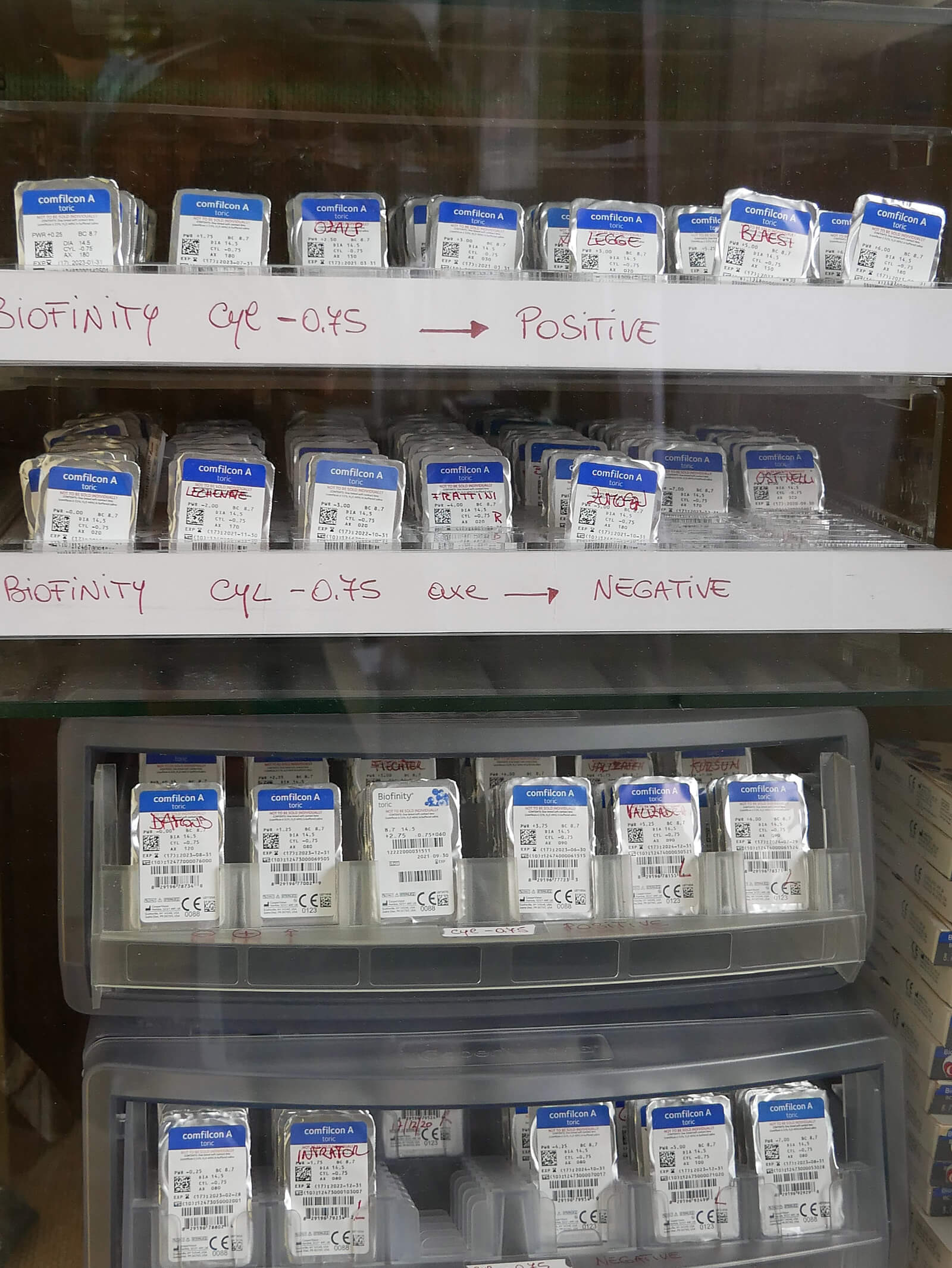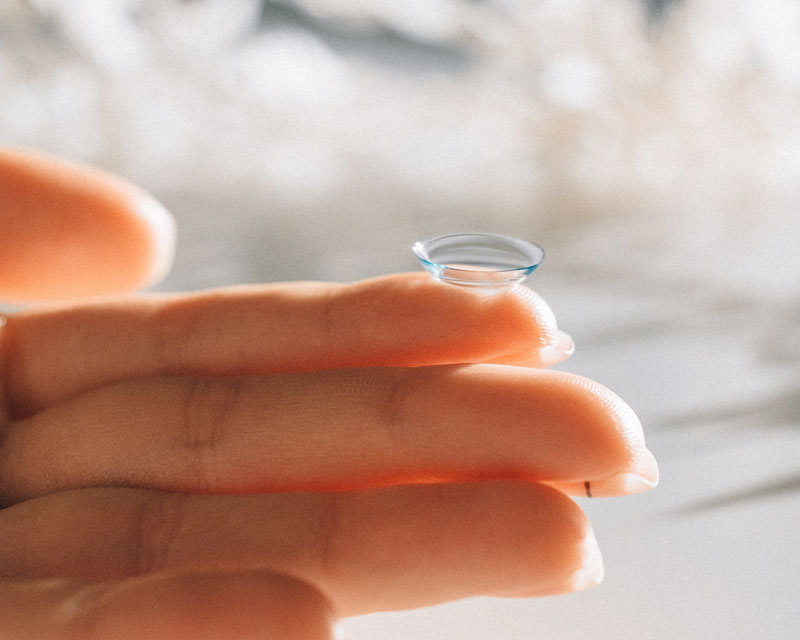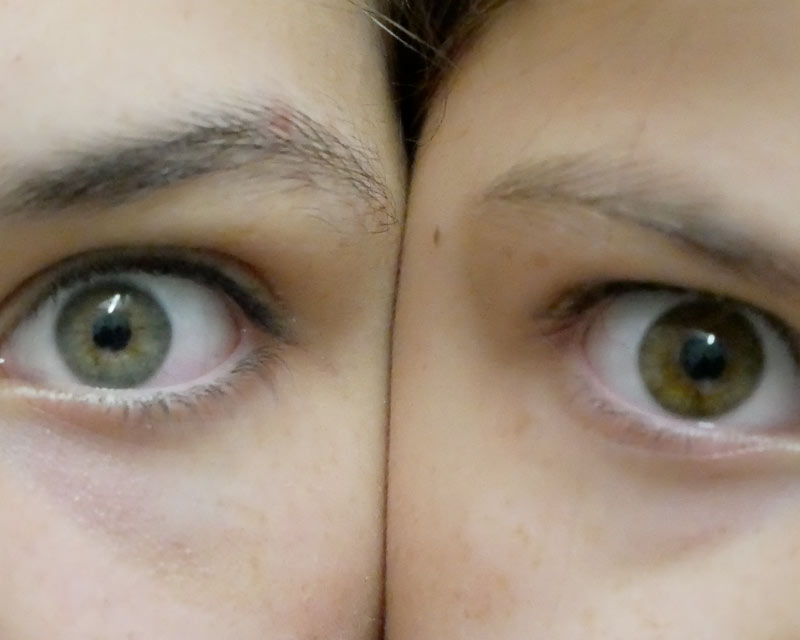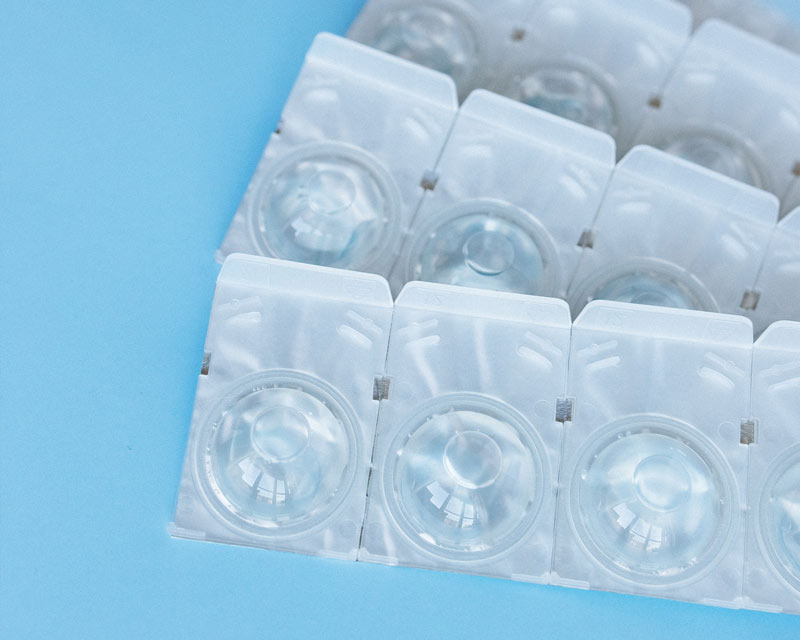Lenses
The contact lenses rest directly on the eye (respectively on the tear film) and thus free the visual field from any distortion. While corrective glasses slightly enlarge (hyperopia) or slightly reduce (myopia) the perceived image, lenses provide an image of 1:1 dimension.
Contact lenses correct both hyperopia and myopia, as well as astigmatism. Lenses with near and distance correction are also available for presbyopes. Prerequisites for wearing contact lenses: a thorough evaluation ((link to “contact lens fitting”)), a custom fitting, regular eye and lens inspections, and regular lens cleaning.
People who are used to wearing glasses will first have the impression that their field of vision is enlarged when they opt for contact lenses. Practical, easy to use, always on! Many sportsmen and women decide to wear contact lenses to correct their vision.

Rigid lenses
The rigid lens is adapted to the shape of the cornea.

Rigid lenses are hard and although they have some flexibility, they are brittle, unlike soft or disposable lenses that can be folded in half. The diameter is much smaller and covers less of the eye. Thanks to its shape adapted to the cornea and its small diameter, the rigid lens floats on the tears. It does not touch the cornea and lets the oxygen necessary for its survival pass underneath. These lenses are designed to be worn for a period of one to two years, which requires regular monitoring.
Lenses for orthokerathology
They are designed to correct myopia in children.

A semi-rigid variant of the lens. Custom-made for each cornea, it is designed to correct myopia in children. Its particular foundation allows to slow down the evolution of this visual defect. Its particularity: it can be worn while sleeping and once removed, the vision will be perfect without having to wear another correction.
Soft lenses
Like a cushion filled with water, they are very comfortable to wear.

Soft lenses look like a cushion filled with water, which makes them very comfortable to wear. With a larger diameter than rigid lenses, they cover the entire surface of the cornea. Depending on the correction and the type of daily use, it is possible to opt for daily, monthly or annual disposable soft lenses. The current materials allow an excellent oxygenation of the cornea.
Maintenance
Our contact lens specialists will be able to guide you during the contact lens fitting examination and advise you on the appropriate care product for the comfort and hygiene of your eyes. It is essential to clean the deposits that stick to the lenses, deposits produced by the eyes themselves as well as by external agents. The products will be chosen according to the type of lens.
There are a multitude of contact lens care products. For soft lens wearers, we recommend the use of a peroxide lens care product with deproteinization tablets and a saline solution. All-in-one” products contain cleaning agents such as chlorine or ammonia, both of which are potentially allergenic. Wearers sometimes complain of discomfort or that their eyes are easily reddened. Peroxide cleaning products are hypoallergenic and their effectiveness against all types of fungus, bacteria and viruses is superior to any other product.
Rigid lenses require several types of products: soap for mechanical cleaning, aqueous preservative solution and saline solution for rinsing before wearing. Some rigid lens wearers add a drop of artificial tear before putting them in, to increase comfort.
